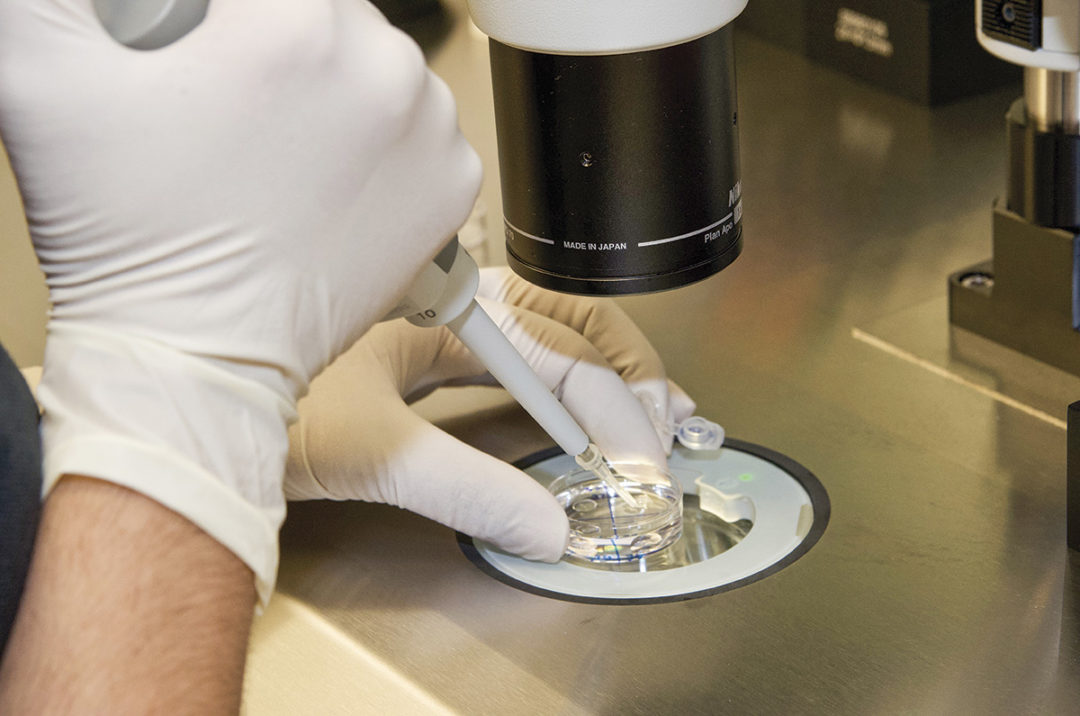Mating selection and reproduction method are two of the most important decisions a dairy makes, impacting profit, efficiency and overall sustainability of their operation. The adoption and use of in vitro fertilization (IVF) has experienced tremendous growth and success in the bovine reproductive sector. This growth is driven by the ease of use and the opportunity to achieve faster genetic improvement that is unmatched by other reproductive methods.
According to the latest data published by the International Embryo Technology Society (IETS), 76% of all reported embryo production was made through IVF versus in vivo- derived (IVD) embryo production. In 2020 in the U.S. alone, there were three times more IVF embryos produced than IVD embryos, with 57% of those IVF embryos coming from dairy breeds. The proof is in the numbers; dairy farmers prefer to use IVF as their reproductive method and there are several reasons why:
- Double monthly embryo production compared to IVD collections
- Genetic gain from both the donor and sire, not just the sire
- Collecting prepubertal heifers, pregnant cows or cows that have recently calved
- Less invasive
- Little to no donor preparation
- One straw of semen for several donors
The evolution of this technology allows farmers to continue their artificial insemination (A.I.) breeding programs while still collecting donors for IVF. The improvements to the IVF process have allowed IVF embryos to produce pregnancy rates comparable to IVD embryos. The advantages of IVF are impossible to ignore, regardless of an operation's current breeding strategy.
"The key to great results is creating a media process that mimics the uterine environment, while also ensuring the media is being used the way it was designed,” says Dr. Bruno Sanches, vice president of Vytelle Advance Operations. There are various proprietary media formulations found throughout the globe, some designed for follicle-stimulating hormone (FSH) injections and others that are hormone-free.
Ovum pickup (OPU)
IVF requires minimal donor preparation compared to other reproductive strategies. In a stimulated IVF system, FSH is used a few days before an IVF collection, which grows the follicles on the ovary. This makes them more visible to the technician during the OPU, where the oocytes (unfertilized embryos) are collected from the donor cow. In hormone-free IVF systems, FSH is not needed. The OPU technician uses ultrasound to tactfully remove all available follicles from each ovary; each follicle houses one oocyte. Once the OPU technician has finished this 15-minute procedure, the oocytes are put into maturation media and transported to a lab, where fertilization takes place the following day.
Fertilization and embryo development
At each point in this process, media is hard at work, ensuring the biological environment is optimal from start to finish. In any IVF system, the two most crucial parts for media performance are during oocyte maturation and embryo culture. The oocytes must be at the correct stage of maturity for fertilization to be successful, making this step time-sensitive. FSH directly affects this factor, and it’s important to use media designed for stimulated oocytes if FSH is given. On the other hand, it would be adverse to use FSH in a hormone-free system because the media is intended for unstimulated oocytes.
The IVF process allows producers to use conventional, pre-sorted or reverse-sorted semen, all while using significantly less than A.I. or IVD embryo production. Because the semen is directly introduced to the oocytes in a dish, lab technicians can use one straw of high-quality semen for several donors, enabling producers to maximize expensive units of semen.
Once the oocytes have been introduced to the sire of choice, the structures are moved into the embryo culture phase. The culture media influences the pace of embryo growth, embryo competency and embryo quality, making this portion of the process vital for the success of the embryo in the field.
Once the embryos have been cultured in the lab for seven days, producers can either utilize the embryos for fresh implantation or have the lab technicians freeze them for later use. Most bovine embryos in the U.S. are frozen using the direct thaw (DT) method. This protocol allows the embryos to be thawed very similarly to a straw of semen, reducing room for human error and improving the efficiency of the transfer process.
Embryos are evaluated following the IETS and American Embryo Transfer Association (AETA) grading scale of 1-3, where Grade 1 is the highest quality and Grade 3 is the lowest. The quality of the embryos at this stage can dictate the producer’s embryo plan. For example, some operations prefer to transfer fresh, Grade 2 embryos and freeze the Grade 1 embryos. Since Grade 2 embryos are of lesser quality, they are expected to have a lower conception rate after undergoing the freezing process. Therefore, transferring fresh gives them the best chance at producing a pregnancy. The ratio of Grade 1 versus Grade 2 embryos produced will vary greatly depending on which media is utilized throughout the IVF system.
Another reproductive method
The use of IVF technology in the dairy space is well established and widely adopted. The ability to make embryos on a donor every two weeks allows producers to keep up with the competitive genetic pace and contribute to the rapid evolution of genetics, all while managing their typical day-to-day responsibilities. "IVF is the easiest embryo production method available," Sanches says.
The improvements to the media formulations and the simplicity of the process have contributed to the impressive evolution of the bovine IVF industry. These improvements are much needed, as farmers are now under pressure to faster replicate sustainable genetics. To meet the global demand for more sustainably produced dairy products, dairy producers can use IVF as their preferred reproductive solution to support their genetic progress and ensure a profitable future.








